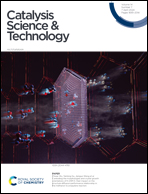Recent advances in promoting dry reforming of methane using nickel-based catalysts
Abstract
Dry reforming of methane (DRM) is an efficient way for CO2 utilization to convert CH4 and CO2 to syngas (H2 and CO), which is an ingredient to produce hydrogen and methanol and hydrocarbons via Fischer–Tropsch process. Considerable attention is drawn to Ni-based catalyst due to its remarkable reactivity for CH4 and CO2 conversion. However, the weakness of sintering and coking restrains its industrial applications. The successful design of cost-effective, efficient and stable Ni-based catalysts would be a grand breakthrough for the technology. Herein, the thermodynamic analysis and the mechanisms of sintering and coking are presented. Then, the strategies for improving the performance of catalysts are elaborated as follows, with 1) supports improving the particle dispersion of nickels and changing the reaction process for the hindrance of coking; 2) promoters for regulating the nickel's chemical properties to enable catalytic DRM performance; 3) catalysts obtained by varied preparation methods possess different sizes and interactions. Finally, the challenges and future perspectives are highlighted.

- This article is part of the themed collection: Catalysis Science & Technology Recent Review Articles, 2024


 Please wait while we load your content...
Please wait while we load your content...